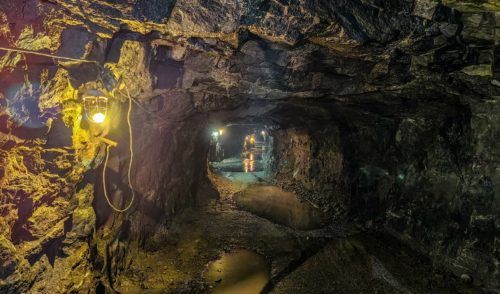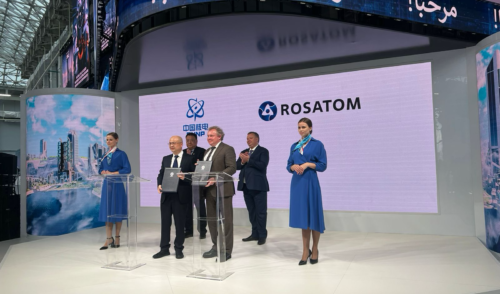
New TUK Cask Licensed to Transport Nuclear Waste
back to contentsTUK-141O, an advanced nuclear cask, will replace Series 13 TUKs. TUK is a Russian acronym for ‘transportation and packaging cask’. Grouped together, TUKs fit into a dedicated container for rail transportation of spent nuclear fuel (SNF). A license has been recently obtained for the first use of TUK-141O cask to transport SNF from Balakovo 4 VVER-1000 reactor to the disposal site.
Series 14 TUKs are promoted by the Federal Center for Nuclear and Radiation Safety. They are made of steel and weigh over 100 tons. Each TUK-141O cask can hold 18 spent fuel assemblies, or has a 50% larger holding capacity than the previous model (TUK-13). With TUK-13 holding up to 6 tons of spent nuclear fuel, TUK-141O can be loaded with up to 9 tons. This is a definite advantage as it reduces the number of carriers to be used in transportation. This will also be a competitive advantage when the company decides to enter international back-end markets since the new TUK makes it possible to carry more spent nuclear fuel from VVER-1000 reactors based outside Russia on one train. Firm neutron protection and double lids of the new cask ensure exceptional nuclear and radiation safety. Thanks to enhanced safety levels, the time needed to cool spent fuel assemblies in the storage pool can be reduced by half. TUK-141O is designed to handle spent nuclear fuel with a high heat release (up to 36 kW per cask) and is therefore suitable to carry spent fuel from VVER-1200 and VVER-TOI reactors.
Design of the TUK-141O cask was licensed in 2015. In February 2017, a safety case for VVER-1000 SNF transportation in TUK-141O flasks was finalized and received approval.
If the pilot transportation of spent fuel assemblies from the Balakovo NPP to Mayak disposal facility is a success, TUK-141O casks will be used to take away spent fuel from all VVER-1000 reactors in Russia for storage or reprocessing.




